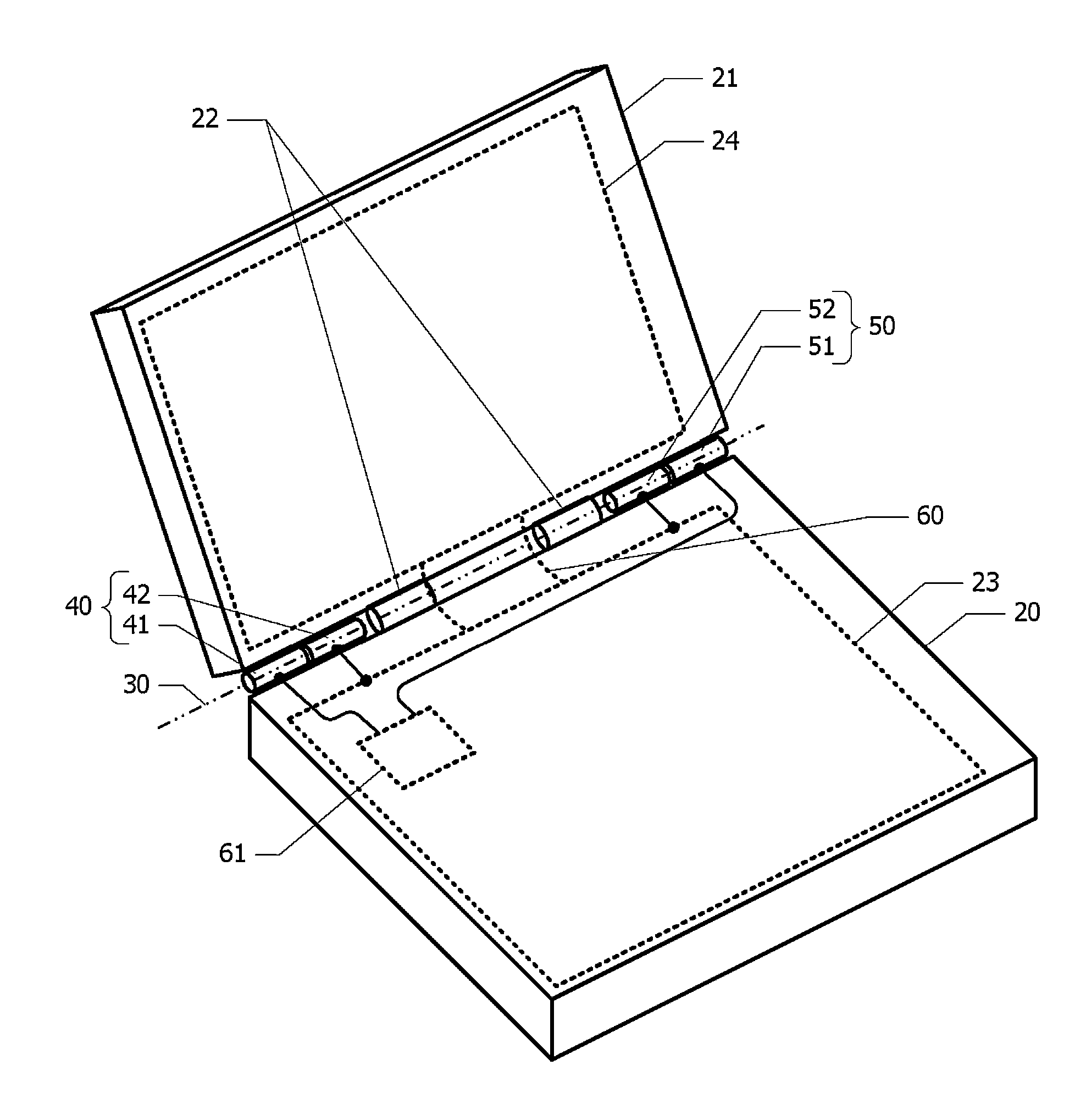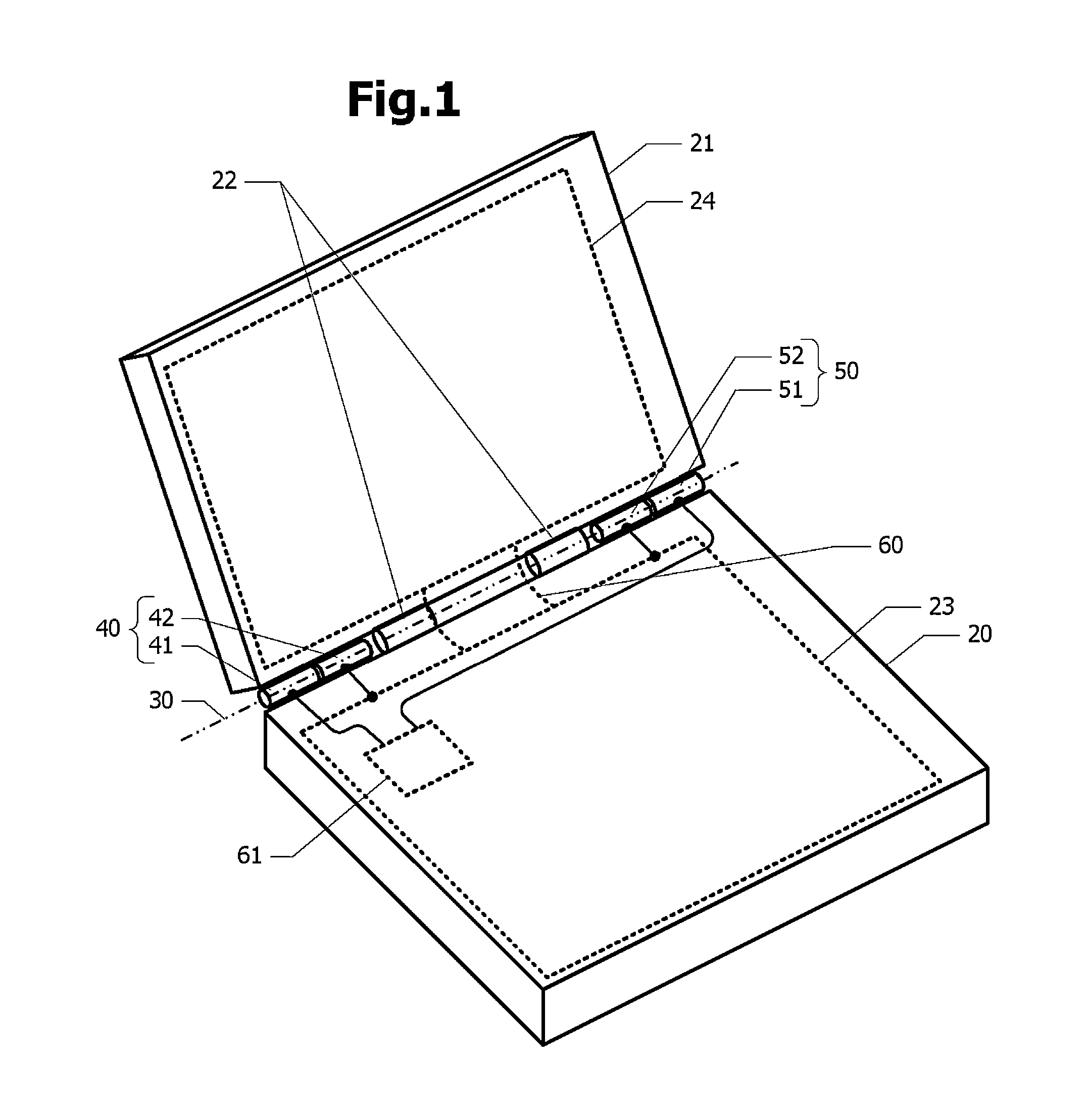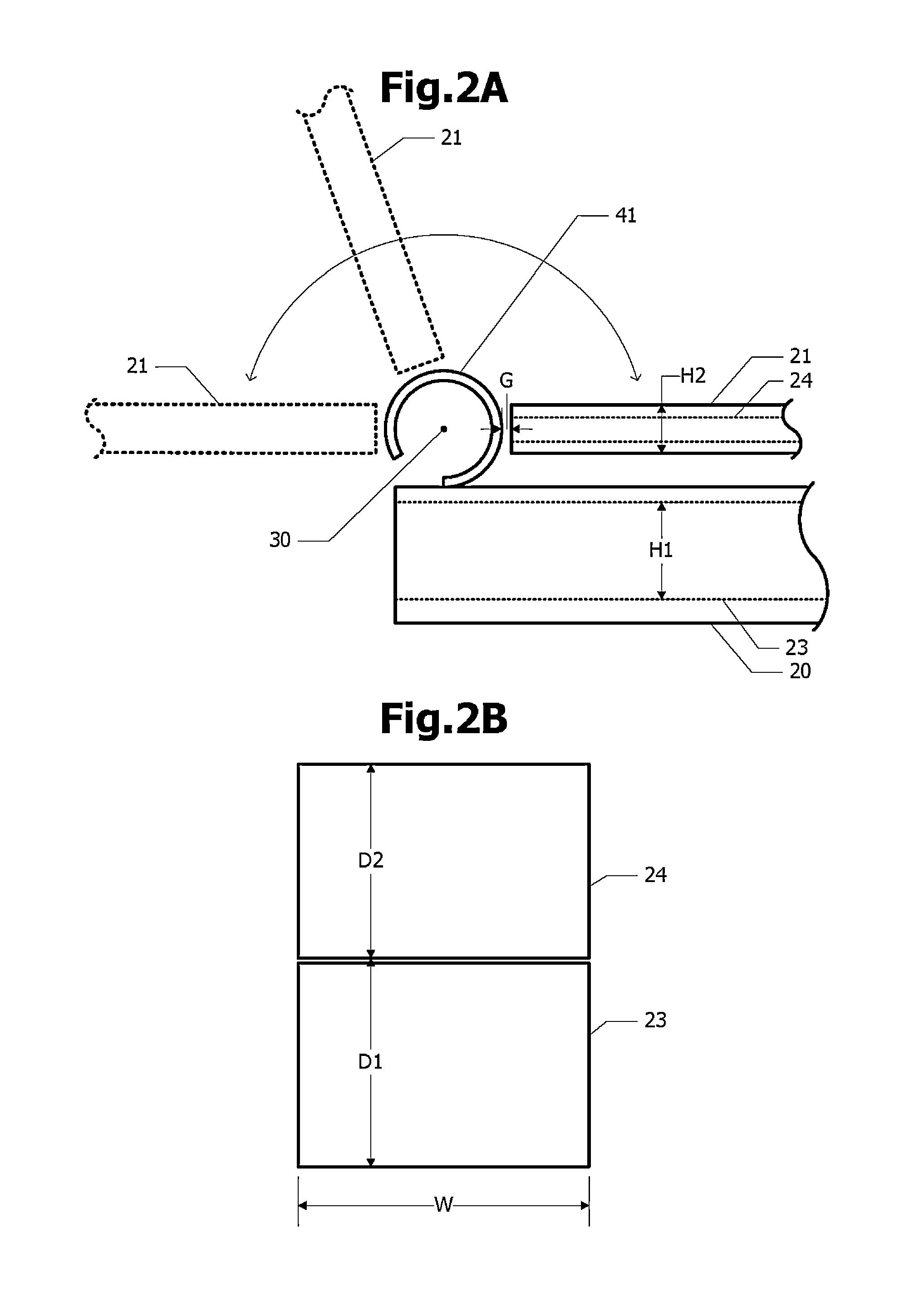Antenna device
an antenna and antenna technology, applied in the field of antenna devices, can solve problems such as difficult to ensure sufficient isolation, and achieve the effects of improving radiation efficiency, improving isolation, and small correlation coefficien
- Summary
- Abstract
- Description
- Claims
- Application Information
AI Technical Summary
Benefits of technology
Problems solved by technology
Method used
Image
Examples
first embodiment
[0048]FIG. 1 is a schematic perspective view of an electronic apparatus including an antenna device according to a first embodiment. A second housing 21 is openably and closably attached to a first housing 20 by rotation mechanisms 22. For example, the first housing 20 contains a keyboard and the second housing 21 contains a liquid crystal panel. The rotation mechanisms 22 include, for example, hinges. The first housing 20 contains a first conductor plate 23, and the second housing 21 contains a second conductor plate 24. When the first housing 20 is made of an insulating material, such as resin, the first conductor plate 23 is disposed inside the first housing 20. When the first housing 20 is made of a conductive material, such as metal, the first housing 20 also serves as the first conductor plate 23. Similarly, the second housing 21 contains or serves as the second conductor plate 24.
[0049]A first driven element 41, a first parasitic element 42, a second driven element 51, and a ...
second embodiment
[0070]FIG. 8A is a perspective view of an antenna device according to a second embodiment. Hereinafter, differences from the first embodiment will be described, and the description of the same configuration will be omitted. Along the rotation axis 30, the rotation mechanism 22, the first parasitic element 42, and the first driven element 41 are arranged in this order from the center to the left, whereas the rotation mechanism 22, the second parasitic element 52, and the second driven element 51 are arranged in this order from the center to the right.
[0071]FIG. 8B is a schematic diagram of the rotation mechanisms 22 and their vicinity. The rotation mechanisms 22 each include a first member 22A secured to the first housing 20 and a second member 22B secured to the second housing 21. The first member 22A and the second member 22B are made of a conductive material, such as metal. The first member 22A is electrically connected to the first conductor plate 23, and the second member 22B is...
third embodiment
[0072]FIG. 9A is a perspective view of an antenna device according to a third embodiment. Hereinafter, differences from the first embodiment will be described, and the description of the same configuration will be omitted. Along the rotation axis 30, the continuity structure 60 is disposed in the center, the rotation mechanism 22 and the first driven element 41 are arranged in this order from the center to the left, and the rotation mechanism 22 and the second driven element 51 are arranged in this order from the center to the right.
[0073]FIG. 9B is a schematic diagram of the first driven element 41, the rotation mechanism 22, and their vicinity. The first driven element 41 is connected to the high-frequency circuit 61. The rotation mechanism 22 includes a first member 22C secured to the first housing 20 and a second member 22D secured to the second housing 21. At least part of the first member 22C is made of a conductive material, such as metal. The conductive part of the first mem...
PUM
 Login to View More
Login to View More Abstract
Description
Claims
Application Information
 Login to View More
Login to View More - R&D
- Intellectual Property
- Life Sciences
- Materials
- Tech Scout
- Unparalleled Data Quality
- Higher Quality Content
- 60% Fewer Hallucinations
Browse by: Latest US Patents, China's latest patents, Technical Efficacy Thesaurus, Application Domain, Technology Topic, Popular Technical Reports.
© 2025 PatSnap. All rights reserved.Legal|Privacy policy|Modern Slavery Act Transparency Statement|Sitemap|About US| Contact US: help@patsnap.com



